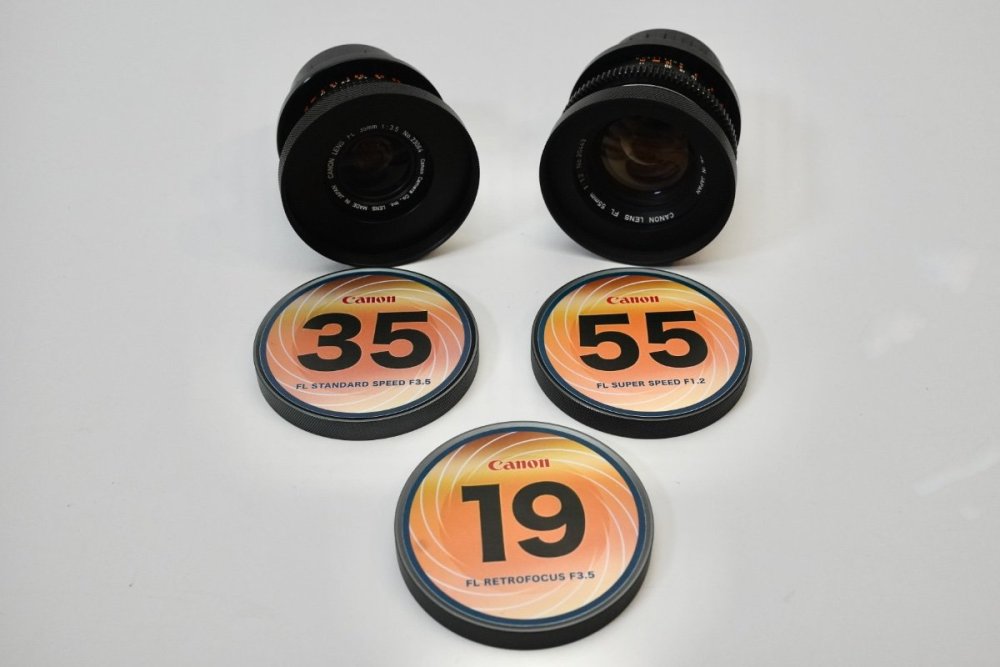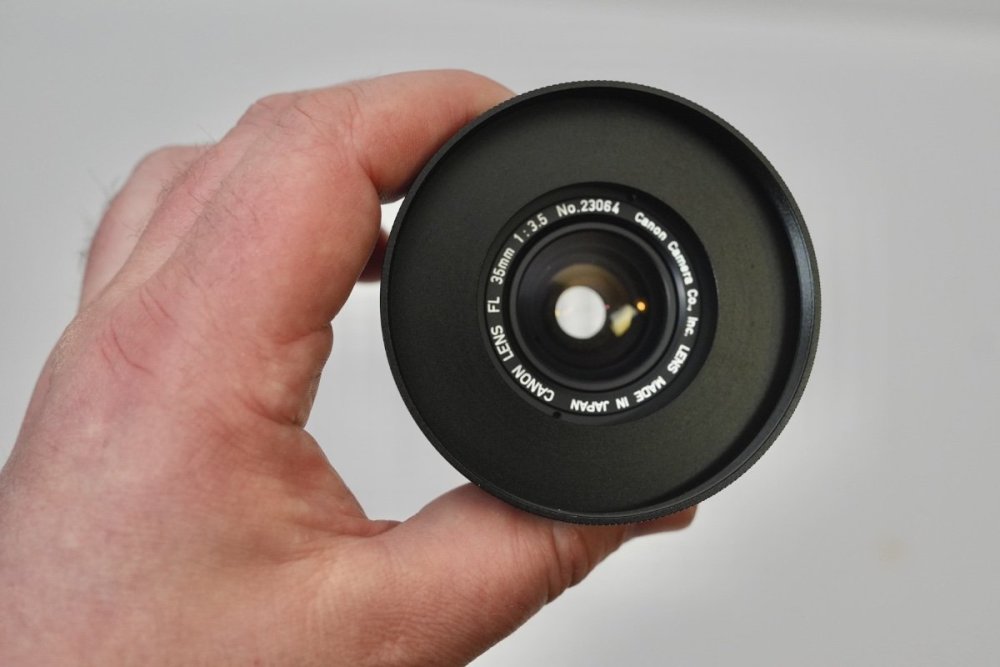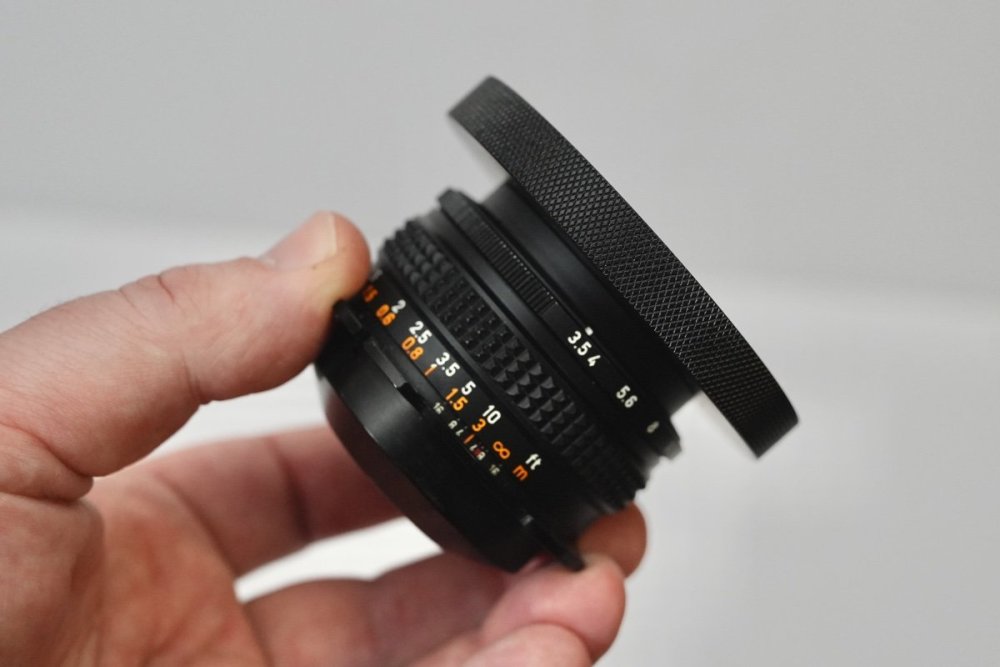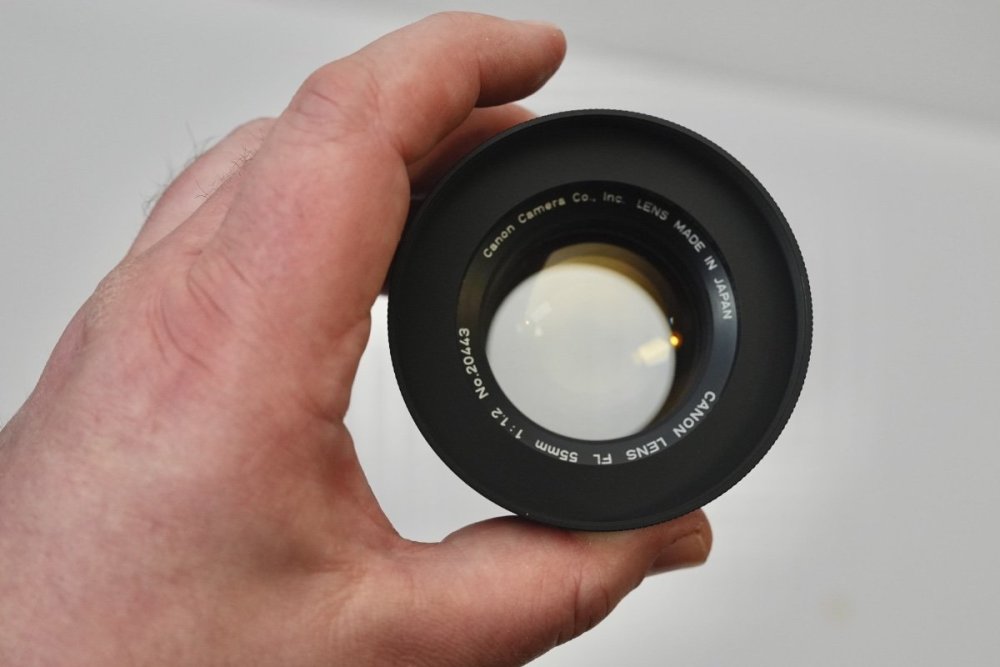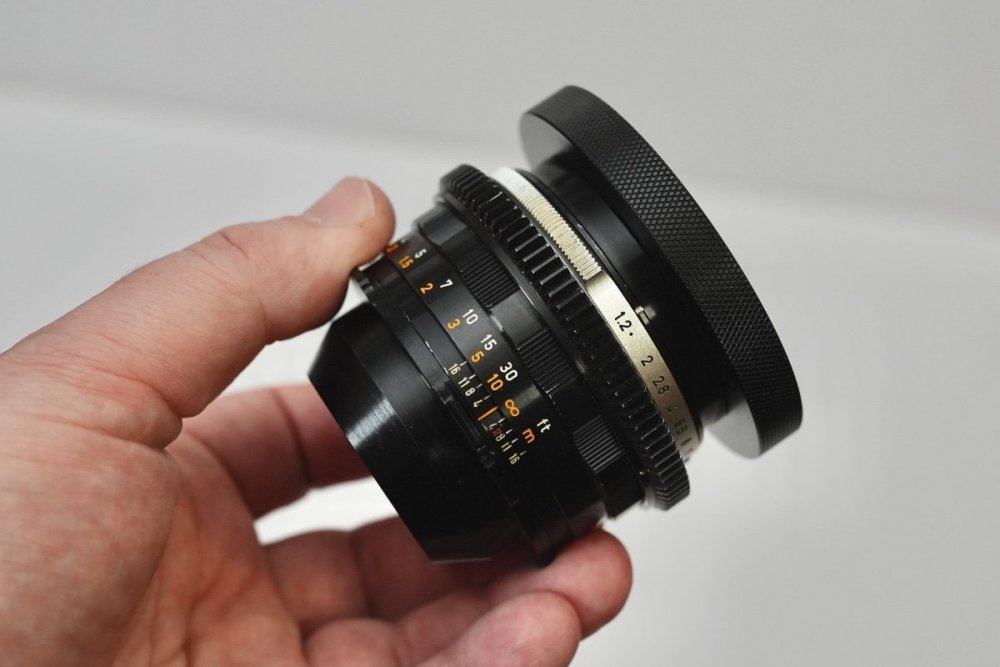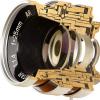All Activity
- Past hour
-
Do you have any crystal sync motors for 16mm cameras for sale?
-
Style Ideas for Period Piece/Comedy
Ravi Kiran replied to Brandon Canning's topic in General Discussion
Below are some examples of period comedies. They mostly use the approach @David Mullen ASC suggests. The sketch comedy examples start with wides that are fairly true to the dramatic style one would expect, to establish the "serious" setting. Then they start to deviate from that with less shadowy lighting and less diffusion/fog than might be used in a drama, so that faces in the mediums and close-ups are more immediately legible for dialogue or reactions, while still retaining the "serious" look. Comedic period pieces -Monty Python and the Holy Grail -Monty Python's Life of Brian -Monty Python's Meaning of Life has some period scenes, (such as this one) -History of the World Part 1 -Robin Hood: Men in Tights -Our Flag Means Death (TV show) -Hundreds of Beavers (silent comedy inspired, rather than a "realistic" approach) Sketch comedy - Today
-
I’ve a 16BL with TCS-TXM27 control module, I’d like to get the camera CLAd, but only so I can shoot it myself, I’ve loaded it, but weirdly the XLR4 cable it came with was wired reverse!! I tried to run it , but nothing, I hope the module has a series diode to prevent reverse damage. Any suggestions welcome Ian
-
Matthew Hobson joined the community
-
Michele De Benedetti joined the community
-
I always make my packs up out of D-sized cells. The couple of battery belts I've rebuilt (taking out the old dead NiCd batteries and replacing them with NiMh) have also used D-sized cells. Especially for running both the camera motor and the magazine motor at the same time, I think AAs just aren't enough. Duncan
-
Do you have pics of the lenses ot test footage we can look at stashed somewhere, dropbox etc? When was the set last serviced? By who? Thanks. Gregg.
-
Congratulations!
-
His criminal activity spans many years and goes far beyond stolen equipment. He has defrauded actors, investors, stage parents, and others out of hundreds of thousands of dollars. He regularly rents high-end properties, both studios and homes, without any intention of paying. Operating under multiple aliases, he has also recruited others to assist in his schemes. At this point, he has committed crimes in nearly every state, and the scope of his actions warrants the involvement of federal authorities, including the FBI.
-
kanery hiddelstone started following First test rolls on my new (to me) Aaton XTR prod.
- Yesterday
-
Congratulations Gregory... I hope you enjoy the next chapter of your life.
-
Style Ideas for Period Piece/Comedy
Brandon Canning replied to Brandon Canning's topic in General Discussion
Thanks so much for the thoughtful reply @David Mullen ASC this is really helpful, much appreciated. -
Yea, it's not sadly. There really truly were only a few hundred Arri-only feature films prior to the 1980's shot globally. It's a very small number. There is actually a book I have somewhere in my storage about it, they listed every film on a few pages, it was a VERY short list and many of them were more recently made, as the book came out in the 90's. 35BL was a big deal of course, but it was also trust with the system, people started to trust it more and more, which led to more and more use. So I will give ya the 1980's as potentially a time period where they started their dominance. I still think it's only 40 years or so if you actually look at titles globally. Obviously with TV, commercial, music video and 16mm, there is no contest, Arri has dominated those fields for a long time.
-
μεταμορφώσεις
Jeff Bernstein replied to Jeff Bernstein's topic in Students, New Filmmakers, Film Schools and Programs
Master cinematographer William H. Daniels Dinner at Eight (1933). John Barrymore's psychological trouble is transmitted cinematically via the flashing city lights outside of the window : -
For sale two cine modded Canon FL lenses, both modded to Arri PL mount. Canon FL 35mm f3.5 serial no: 23064 Canon FL 55mm f1.2 serial no: 20443 These two focal lengths have gorgeous golden flares, similar to the Canon rangefinder lenses. They are superior quality modded lenses, with solid Arri PL mounts, of a different standard to the ones that usually come up for sale on ebay. Both lenses have had their apertures declicked, with Simmod knurled front rings and custom designed front lens caps. Also included is a matching cap for a Canon FL 19mm f3.5 wide angle, a lens I previously owned, so the cap is included incase any buyer wants to also add that lens to the kit. Additional images and samples available on request. Price: £1650 The lenses ship worldwide from the UK at cost.
-
Owen Laird joined the community
-
Good point, poor choice of words on my part. I guess from my perspective, in the 40+ years of my career, Arri has always been one of the main players, and not just because of their cameras...not to mention they have remained relevant after 100 years, not many companies can say this. Thanks all for the feedback, I edited my post
-
Congratulations on a fantastic career Gregory! Wishing you the best for your next chapter!
-
Nicholas Azarya joined the community
-
Here's a thread where we talked about some of the many movies shot primarily on an Arriflex IIC:
-
I think it would be way more than that. I would say Arri have been a dominant player in the film industry for a lot longer than since 1990, probably since at least the 70s, particularly in countries outside the US. Panavision never really penetrated the European market, and was often too expensive for many other parts of the world. Mitchell were the dominant camera company globally from probably the 30s until the 70s, but in Europe particularly, IICs were very often used on lower budget and New Wave films, sometimes blimped. Often a IIC was used for the handheld or action shots in conjunction with a Mitchell. There's also the Techniscope films shot with modified IIcs, the Pan-Arris used in conjunction with Panavision lenses, and plenty of films from Asia or India or other parts of the world. The American New Wave started with films shot on Arri IIcs like Bullit and Easy Rider and by the 70s IIcs and 35 BLs were used on a multitude of films - think Scorcese or Kubrick or Bergman or Truffaut or Boorman etc. By the 80s, almost everything not shot with Panavision (and I'd say a majority of European cinema) was Arri. Moviecam made a dent in the duopoly in the 90s but were subsequently bough by Arri to produce the Arricam line. There's also the legacy of Arri's 1937 shutter/mirror design, which ended up as the primary reflex system utilised by motion picture cameras from the 70s to the 2000s, not to mention the various Arri designs that have become standards in cinematography like the PL mount since 1982. And in the 16mm world Arri have been the field leaders since the 16St was released in 1952. So yeah, maybe not 100 years, but at least a good 50! In the pantheon of cinema camera companies since the birth of cinema I would probably rank them Mitchell, Arri, Panavision, Debrie, Bell & Howell.
-
Style Ideas for Period Piece/Comedy
Brian Drysdale replied to Brandon Canning's topic in General Discussion
The BBC's "Blackadder" TV series goes through a number of periods, each series moves forward in time, eventually ending in WW1, where they get killed. This one fits the period you seem to be set. -
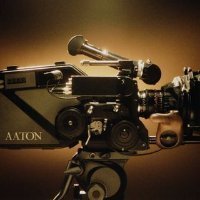
Aaton HD Flicker Free HD Video Taps
Robino Jones replied to Tyler Purcell's topic in Cine Marketplace
Interested in your 35III version! looking forward to your demo.- 1 reply
-
- 1
-

-
I think what Simon was saying is that Arri didn't dominate for 100 years. In fact, their 35mm feature film camera business didn't really take off globally until the end of the 80's and into the 90's. It also only ran through 2012 or so before they came out with digital cameras and shifted away from film. I think you may underestimate the local rental houses and what they rented vs what other people rented. Plus many DP's preferred certain systems and if you weren't working with someone shooting with one of those systems, then how would you know? Historically tho, prior to the 535, 453 and Arricam's release, there were actually very few 35mm movies shot entirely with Arri cameras. I think you'd find it to be in the hundreds globally. The acquisition of Moviecam and the money they put into making the 535, 435 and Arricam systems, were really what got them the dominance. Arri was not doing well financially during the late 90's and they needed to develop a new camera fast, they spent a lot of time revamping Bauers next generation moviecam and turned it into the Arricam. The industry was enamored with the Arricam, Arri scan and Arri laser. The tech worked, it was a DI workflow that everyone wanted and it was BY FAR the most successful end to end system in the world. Those three tools were in every country globally from India and Australia to New Zealand and all over Europe and the United States. Like a web, they basically fully-dominated for what, a decade before film died? Then like a flash, they dumped film and were ready to become the new leaders in digital cinematography. However, their dominance in the professional industry kept going. I do agree, the post 2000 dominance of Arri is legitimate, but it's absolutely not a reflection of the years prior with 35mm filmmaking. When you look back, the most dominant system(s) were made my Mitchell. The BNC, BNCR, Technicolor, the 65mm systems, these are all Mitchell designs. Then when Panavision took over, their dominance soared. From 1930 through 1980 (50 years), the industry still relied heavily on Mitchel systems in the form of Panavision. Yes it's true, many films that shot with Panavision cameras did have a 2C handy for those MOS shots, so it's not like the camera system wasn't used, it absolutely was. Now, maybe you're thinking 16mm? Arri's 16mm cameras were far more widely used, that's for sure. Even the 16BL and S/M were very well used systems due to TV and such. However, the SR simply dominated the industry, it was a checkmate at the time. Even guys like Aaton couldn't really compete until they got their bugs out and made the XTR Prod/Xtera. By then there were thousands of SR's on the market, so it was a rough business to be in. The 416 is still to this day the most dominant 16mm camera available. So if you're referring to 16mm, I'd say the dominance was a lot longer than it was with 35mm, but nowhere near 100 years.
-
Gregg MacPherson started following Cooke Kinetal Lenses
- Last week
-

Marrakech shoot on Ektachrome 100D - bizarre results!
Joerg Polzfusz replied to Stephen Gordon's topic in Super-8
Maybe the camera was affected by the heat (so that the filter got stuck)? Of course, there are also cameras that let you enable the Wratten85 despite having loaded a daylight balanced film. On some cameras, this is a defect, on others, this is by purpose (E160G or using the Wratten85 as orange filter for B&W). -
If you are referring to "and for the next 100 years Arri would be a dominant player in the film industry"...thats my personal opinion as a working DP in the US...you may disagree, but as a young operator in the 80's and a DP in the 90's and beyond, I worked with Arri gear more than any other. (AKS, lenses, cameras, etc)..and even today as a rental house owner the most in demand cameras are Arri. The Kinarri 16 is rare...even the image on the Arri site depicted as an Arri 16 is the Arri 35. The 16mm has a box style body. A 9.5mm was never produced, the only reference I could find to it was a vague comment in a forum and it is not accurate...if you know more please share. I have spent years researching the Kinarri 35mm, in 40+ years of collecting and searching for one I have only personally seen 4, but have documented several others sold at auction and one owned privately , passed on from his grandfather who bought it directly from the makers. FYI- The blog is info and photos of a few of the cameras contained in my collection. I do not own a Kinarri 16
-
Dear Greg, a passage from your blog, Their company would later be shortened to Arri, and for the next 100 years Arri would be a dominant player in the film industry, seems a little far fetched to me. The truth is that Arnold & Richter were a small enterprise and not well known until 1952 when they began selling the ARRIFLEX 16. The ARRIFLEX, from then on coined ARRIFLEX 35, was sold perhaps 40 times up to the beginning of the war, I don’t know that precisely. Until February 1941 some 125 have been made. The Kine cameras of the 1930s were Askania, Bell & Howell, Debrie, Eclair, Mitchell, Vinten, Wall. Thousands of Debrie Parvo were in use when the ARRIFLEX appeared in 1937. ARRI printers are long forgotten (like others). An international player the company became with the 35 BL in the seventies. There have also been a KINARRI 16 and a KINARRI 9½. Only for completeness




